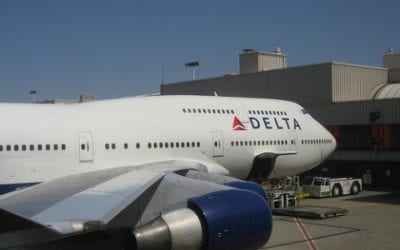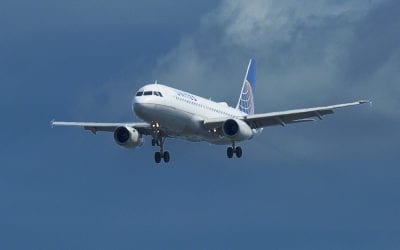Part 1 of this Thanksgiving post explored the new world of minimal competition for airlines. Domestically, four airlines control 87 percent of the market. Internationally, three airline alliances control more than 80 percent of the market. And, airlines are engaging in open capacity discipline — keeping the number of flights and seats low, so as to not increase supply. That means demand stays high and airfares and associated ancillary fees rise.
Today we take a look at how the airlines plan to pack more passengers into planes, reduce the value of their frequent fliers (except for the big spenders), continue hiding their ancillary fees, restrict where airfares can be published for comparison shopping and shift the tax burden to passengers.
Airlines squeeze more passengers into planes
When profits are at a record high and oil prices are lower than in recent memory, airlines have rolled out another moneymaker at the expense of their passengers in the back of the plane — packing more passengers into their planes.
Not only are load factors at record highs, the actual number of seats loaded into today’s aircraft is at a record high. Some airlines are simply moving the seats closer together, taking away legroom, in order to squeeze another row or two of seats into the same old airline aluminum tube. Other airlines have purchased new “thinner” seats that allow them to load more passenger cargo in the same space while maintaining about the same legroom. Even the lowest of low cost airlines admits that seats can’t be squeezed much closer together without facing passenger revolt.
Now, airline passengers (whether they know it or not) are getting ready to experience new “narrower” seats as airlines attempt to squeeze one more seat across the plane by taking away “butt space.” This width of the seat is a new initiative, as the airlines so nicely describe it, “that passengers have asked for.” This time, airlines (well, their passengers being crammed into these new seats) will have to cope with not only “butt space,” but with shoulder space as well. I am not looking forward to experiencing this new “improvement” in passenger coach class comfort.
New ancillary fees
Just in time for Christmas, JetBlue sprung a Black Friday surprise on the flying public by eliminating their first-checked-bag-is-free policy and decided to introduce a bundled airfare product to make figuring out the full cost of the flights more difficult to determine and price comparisons more challenging. Plus, JetBlue doubled down on reducing legroom in the back of their planes while providing lay-flat seating for those monied few who will sleep their way across the country.
These new fees cheered Wall Street, but seem just more of the same for the hoi polloi relegated to the back of the plane. While JetBlue could have continued down its path that produced profits and happy customers, they have turned to the dark side and will find a series of problems that will plague their decision and their #1 customer service ranking is sure to dive.
Otherwise, the legacy carriers are fine-tuning their fee structure, which means they are adding more fees here and there; wherever they feel they can scratch a few pennies for their CEOs and executives to help with their retirement programs.
Still no disclosure of ancillary fees
Together with more ancillary fees, the airlines are steadfastly refusing to disclose these extra fees to travel agents who still sell around 60 percent of the airline tickets across the country. These travel agents serve the airlines’ most important customers — frequent business travelers — and include online travel agents as well as the corner travel agents that dot small-town America.
The Department of Transportation (DOT) has proposed a rulemaking that eventually will force the airlines to disclose the prices for their services to every channel where the airlines choose to sell their airline tickets. But, so far, obscuring pricing and making comparison shopping more difficult has been the rule of the day for the airlines.
Even if all goes well, the new rules that will require the airlines to disclose baggage and seat-reservation fees will not go into effect until sometime in 2016. They tell us that patience is a virtue, while for the airlines it is a weapon for more delays.
Frequent flier programs
Virtually all passengers are now learning that their precious frequent flier miles are losing value. Finding flights on which to fly is more difficult. Then, when a flight is found, new fuel surcharges and redemption fees make these free tickets anything but free.
Now, the airlines, with the exception of American Airlines and US Airways, are shifting to a system that rewards how much money is spent for tickets rather than how many miles are flown. Don’t worry, once AA/USair finish with their company integration, they will more than likely march down an identical path as Delta and United Airlines.
Record profits
Anyone who followed the latest round of airline financial reports knows that the airlines are enjoying record profits. They are making billions of dollars. And, more billions of dollars. All the while passengers are waiting for some benefits to accrue to them. Alas, that isn’t in the cards.
Fewer taxes
Finally, the airlines have managed to foist off virtually every tax that they had to pay onto their passengers. When examined closely, the taxes paid for airline transportation are paid by travelers and not by the airlines.
Though airlines bemoaned the increase in the TSA 9/11 Security Fee earlier this year, they never mention that part of the devil’s bargain that brought consumers the hefty fee increase included a reduction by hundreds of millions of dollars that airlines were paying to TSA under the previous system.
Plus, the airlines operate with air traffic control funds derived by a 7.5 percent aviation transportation excise tax that is paid entirely by passengers.
And so it goes: Everyone wants something from the passengers. Customs and border protection wants more fees. Airports want to almost double the passenger facility charges bringing them $8/passenger every time an airline lands. (That means only passenger facility charges will cost passengers $32 per round-trip connecting flight.) And, don’t relax yet — the agriculture department wants more from incoming passengers to inspect fruits and vegetables and meats that might be smuggled through airports by returning tourists.
At least, these activities are not going on invisibly. Travelers United is keeping a watch on them and still working to encourage DOT and Congress to do something to help the flying public. But, it is a tough slog.



